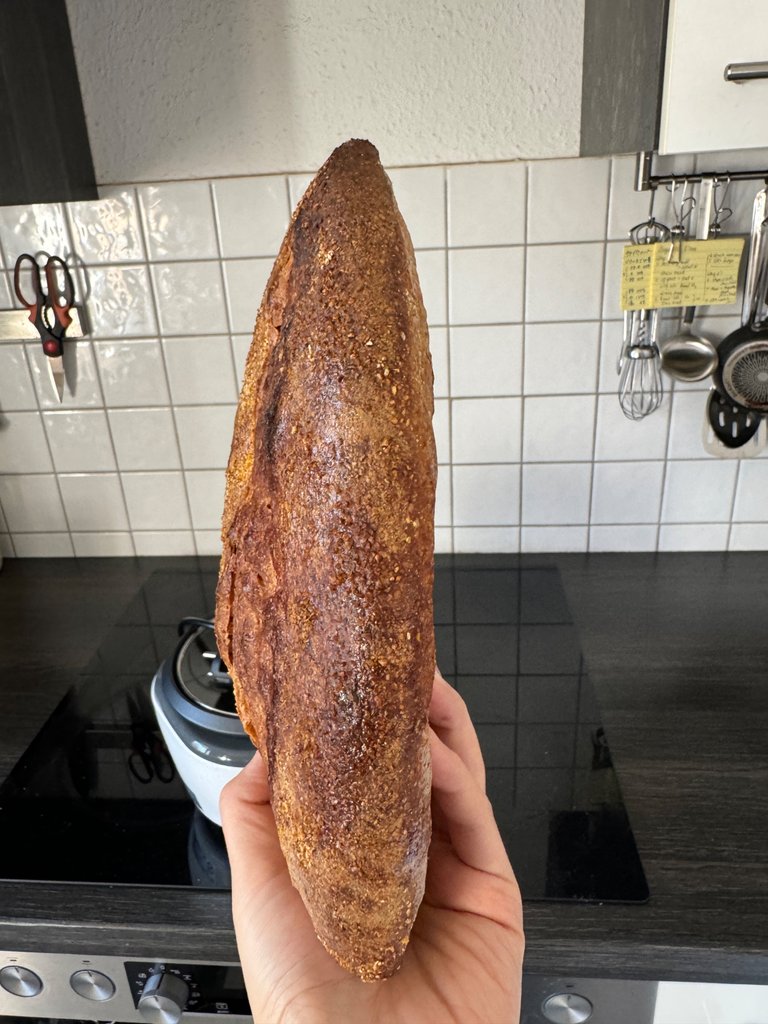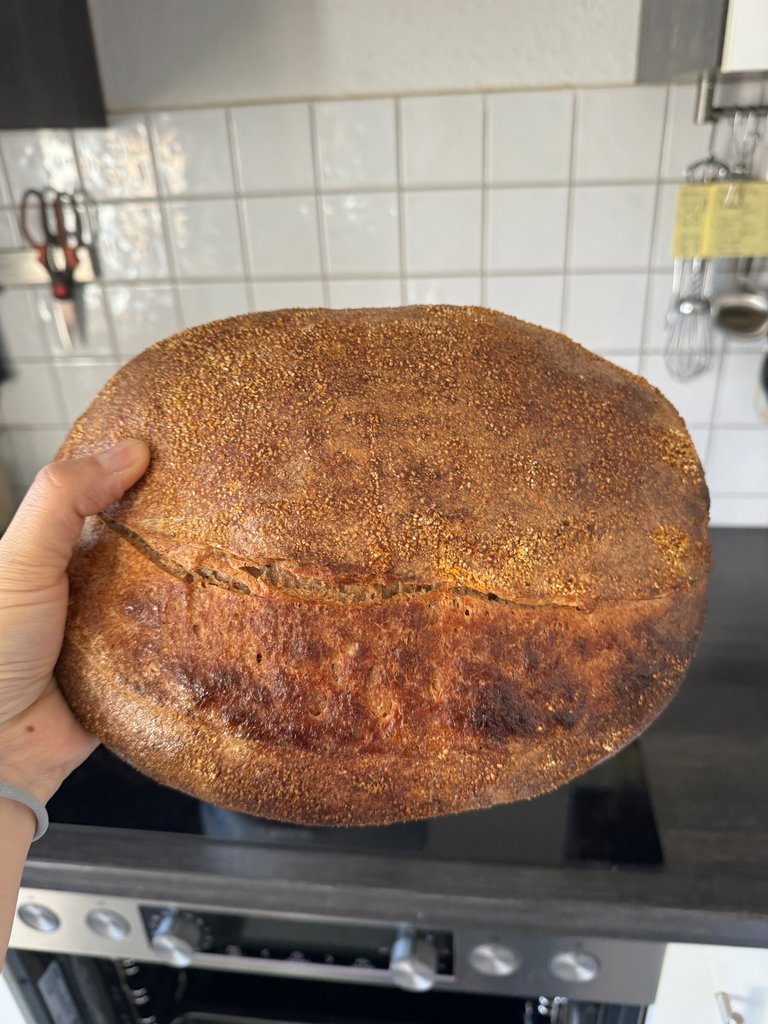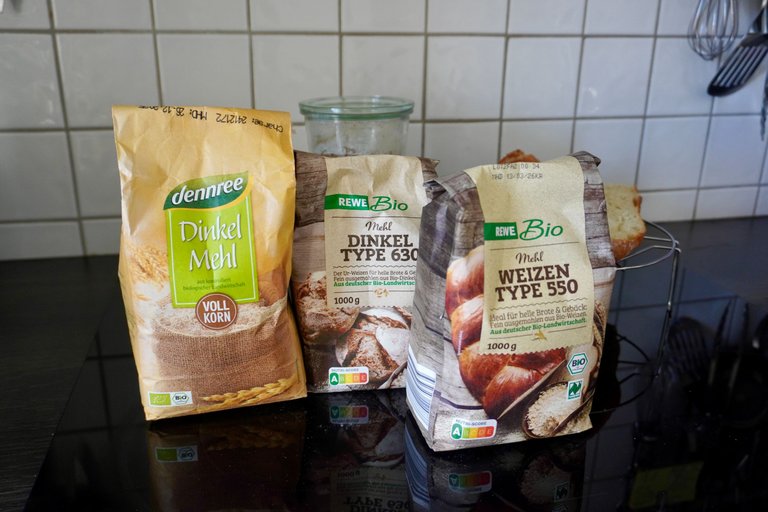
When browsing bakeries in Germany, I often come across bread made with Dinkelmehl — spelt flour. It tends to be a little more expensive, and since it's known as an ancient grain with possible health benefits, I often find myself picking up a bag.
Naturally, I wanted to try using it in my own baking. But after several attempts, I realized it's not so easy to work with. At first, I thought I was just making mistakes in the process, but after testing a few times and doing some research, I came to understand it was simply the nature of spelt flour.
Swapping spelt for regular flour in standard recipes can result in… well, this 😅:
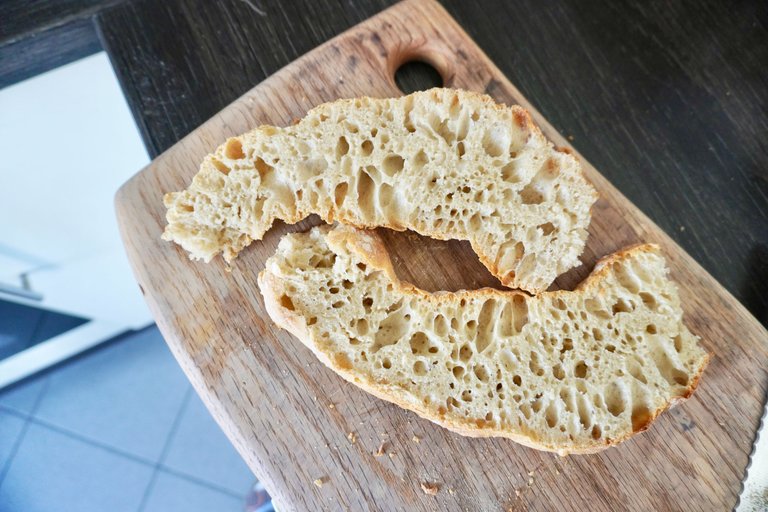
In this post, I’d like to share my personal experience using both spelt and regular wheat flours, and my approach using them differently.
Spelt and Modern Wheat — What’s the Difference?
Spelt (Dinkel in German) is an ancient variety of wheat that has been cultivated for centuries. It’s considered a more natural grain, as it hasn’t undergone the same level of hybridization as modern wheat. On the other hand, the flours we commonly use today — such as German Weizenmehl Typ 550 for me — are modern wheat flours developed for better baking performance. For simplicity, I’ll refer to them here as “modern wheat.”
Spelt is known for its high nutritional value. It’s rich in minerals, B vitamins, and fiber, and is often considered easier on the body. However, its gluten structure is weaker, which makes it more challenging to work with in bread baking.
Modern wheat, thanks to selective breeding, is easier to handle and rises more reliably. Still, since we eat bread almost daily, I wonder if I should be using more spelt for its health benefits.
When Baking Bread, Modern Wheat Is Easier to Handle
If you try to directly swap modern wheat flour for spelt in a recipe, you’ll likely find the dough becomes sticky and harder to manage. It seems to absorb more water, yet doesn’t hold its shape as well. Even when kneading by machine, it can lack elasticity and be harder to proof and shape.
In contrast, modern wheat flour has stronger gluten and produces more consistent results. For beginner bakers or new recipes, using modern wheat offers a more reliable experience.
Here’s a comparison of two sourdough loaves made with the same recipe — one using mostly spelt, and the other mostly modern wheat:
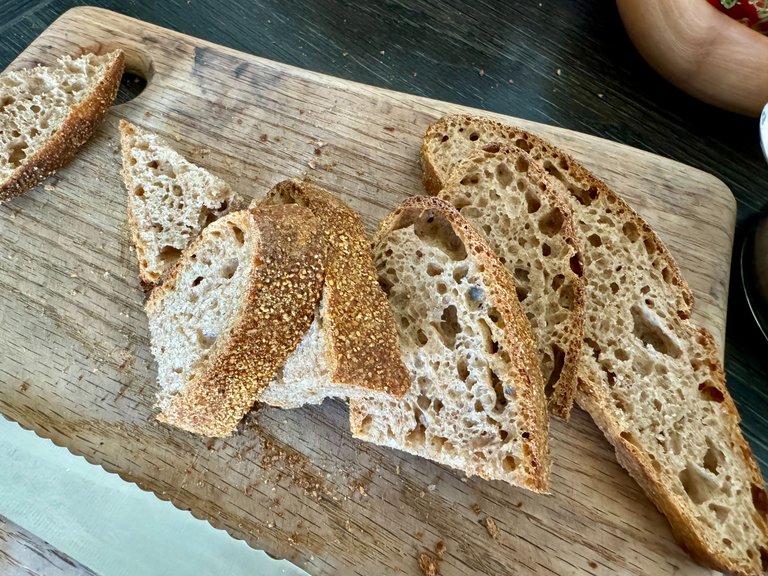
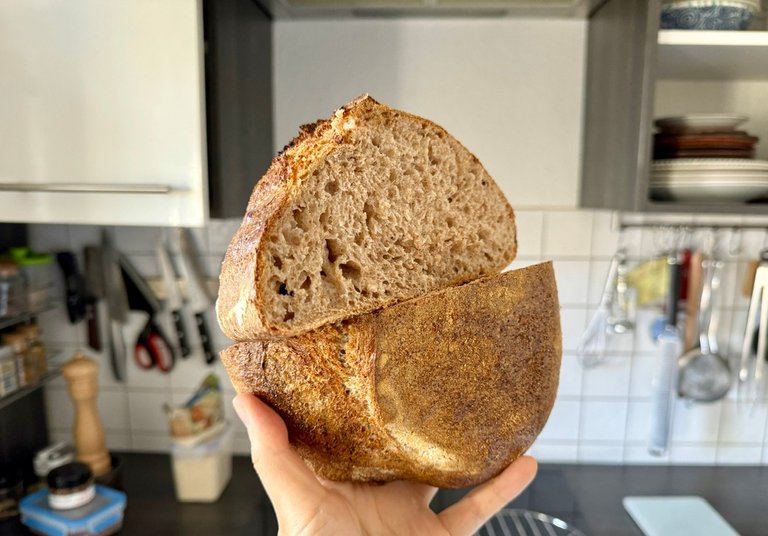
Baking with Spelt Flour
Still, there’s something about spelt that keeps me coming back.
In my experience, spelt works particularly well in firmer, denser breads like bagels. The dough handles well even without reducing the water content.
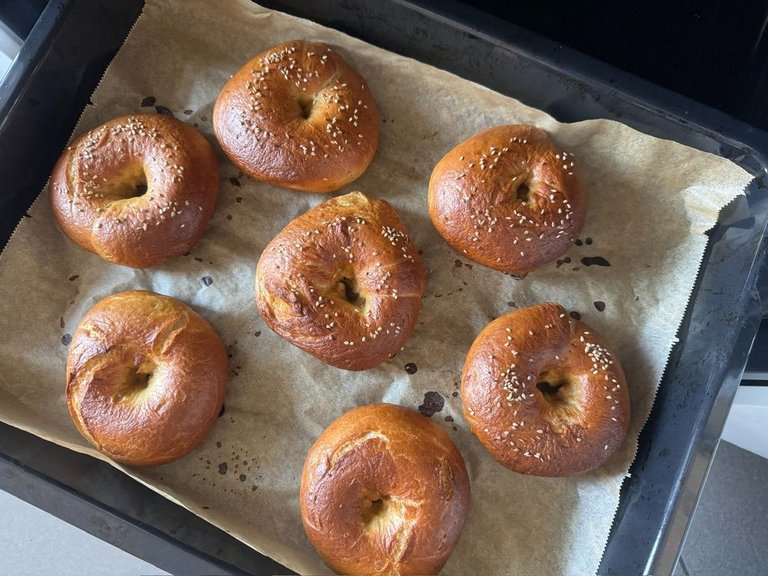
Another tip: try blending spelt and modern wheat. For sourdough, I sometimes use 10–30% spelt. It strikes a nice balance in terms of texture, rise, and flavor — and it feels like a small nutritional boost, too.
By the way, spelt flour works perfectly well for sourdough starters. I’ve been maintaining mine with whole grain spelt, and it’s thriving! Maybe wild yeast likes ancient grains, too.
Conclusion
Spelt flour takes some practice, but once you get the hang of it, it opens up a new world of flavor and nutrition. For me, a mix of mostly modern wheat with some spelt works best for daily baking. Rather than choosing one over the other, I think it’s more about finding the right way to use each.
How about you? What kind of flour do you use for baking bread? I’d love to hear your thoughts in the comments!

ドイツでパン屋さんをのぞくと「Dinkelmehl(スペルト小麦粉)」が使われているパンをよく見かけて、ちょっとお値段高めです。スペルト小麦は古代小麦ともいわれる小麦で、品種改良があまりされておらず、健康にもよいとのことで、ついつい買ってしまいます。
自分で作るときにもスペルト小麦を使いたいなと何度かスペルト小麦を使ってパンを焼いてみたのですが、結構扱いが難しいです。当初はスペルト小麦のせいだと気付かず、私が作り方をミスしたのかなと思っていたのですが、何度か試してみて、スペルト小麦の性質のようだと気づいて調べてみて確信を得ました。
単純に現代小麦のレシピをスペルト小麦で置き換えて焼くと・・・😱

今回は、そんなスペルト小麦と普通の小麦(いわゆる現代小麦)をどう使い分けるか、私なりの実感を含めて書いてみたいと思います。
スペルト小麦と現代小麦、その違い
スペルト小麦(ドイツ語ではDinkel)は、古代から栽培されてきた小麦の一種で、自然に近い品種です。一方、私たちが普段使う小麦粉(Weizenmehl Typ 550など)は、製パン性を高めるために品種改良された「現代小麦」です。日本語では特に「普通小麦」や「パン用小麦」などと呼ばれることもありますが、明確な区分がないので、ここでは「現代小麦」としておきます。
スペルト小麦は、栄養価が高く、特にミネラルやビタミンB群、食物繊維が豊富で、体に優しい素材とされていますが、グルテンの質が弱いため、パン作りには少しコツが要ります。
現代小麦は品種改良のたまもでパンを作りやすいです・・・が、健康を考えると、毎日食べるものだしスペルト小麦を使った方がいいのかなとも思います。
パンを焼くには現代小麦が扱いやすい
現代小麦を使うレシピで、単純にスペルト小麦に置き換えると、生地がべたつき、まとまりがよく弾力のある生地に仕上がる現代小麦との違いを感じました。水分を多く含むのか、生地のまとまりが悪くなりがちです。機械でこねてもコシが出にくく、発酵や成形が難しいこともしばしば。
それに対して、現代小麦はグルテンがしっかりしていて、ふくらみやすく、生地の扱いも安定しています。初めてトライするパン、パン作り初心者という場合は、現代小麦を使う方が安心感があります。
スペルト小麦だけで焼いたサワードウのパンと、メインは現代小麦で焼いたパンを比べてみましょう。同じレシピで焼いています。


スペルト小麦を使ってパンを焼く
とはいえ、スペルト小麦を使いたくなる気持ちはやっぱりあるんです。体にやさしい感じがしますし、香りもどこか素朴で味わい深い・・・気がします。
実際に使ってみて、置き換えがうまくいくのは、ベーグルのように硬めでむっちりした仕上がりのパンです。わざわざ水分量を控えなくても同じように焼けます。

また、一部だけ現代小麦に置き換えるという方法もおすすめです。私はサワードウのパンでは10-30%をスペルト小麦に置き換えることがあります。これなら生地の扱いやすさ、ふくらみ具合、風味のバランスが取れて、栄養面でもちょっといいかなという感じです。
あと、サワードウはスペルト小麦で作れます。私はスペルト小麦の全粒粉でサワードウのスターターを育てていて、特に問題なく、おすすめです。野生の酵母は古代の品種が好きなのかも!
おわりに
スペルト小麦は使いこなすまでに少し練習が必要ですが、取り入れることでパンの味わいや栄養価がぐっと広がります。毎日のパン、ベースは現代小麦、ちょっとスペルト小麦というミックスが今の私には合っています。二者択一でどちらか選ぶというのではなく、使い分けるとよさそうです。
みなさんはどんな小麦粉でパンを焼いていますか?ぜひコメントで教えてください。
